Bead Blasting VS Sandblasting: A Comprehensive Comparison
 Jul 02,2024
Jul 02,2024

Surface preparation is the most important step when you must characterize a certain sample or component of any product. A good surface finish plays a great role in overall increasing the shelf life of a material. Various techniques are available for surface preparation, but the most prominent ones are bead and sand blasting. In this article, a detailed comparison is made between both techniques to benefit the industrialist in increasing the overall efficiency of the project.
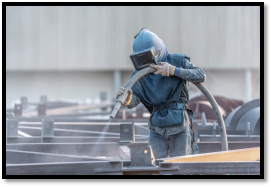
Figure 1: Surface preparation
What is Bead Blasting
A process in which the surface is treated with the impact of beads at high pressure to avoid contaminants. The beads are made up of glass, plastic or ceramic and typically spherical in shape.
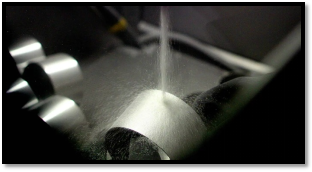
Figure 2: Bead Blasting
Characteristics
Below are the major characteristics associated with bead blasting:
Gentler Approach
They spherical beads impact in a gentler form without damaging the component surface making them an excellent choice for delicate materials.
Fine Surface Finish
This technique has the tendency to produce a uniform and fine surface finish leading to an aesthetic appearance of the surface.
Versatility
It can be used among various types of materials including metallic and non-metallic surfaces proving its versatile nature.
How to Bead Blast Aluminum
Below are the major steps involved in bead blasting aluminum:
- Clean the surface to remove any contaminants and apply masking tape to the areas which you want to prevent from blasting.
- Select an appropriate size of glass bead to acquire the required finish.
- Set up the equipment by cleaning the blasting cabinet and maintain a low pressure manually that is accurate for aluminum.
- Now the actual blasting process starts by adjusting the blasting gun in an optimum angle and distance to attain a uniform surface treatment while checking it consistently until the desired finish.
- After completion, remove the extra contaminants or residue with the help of soft brush.
Bead Blast Finish Stainless Steel
Below are the major steps involved in bead blasting stainless steel:
| Surface Preperation | Clean the surface to remove any contaminants. |
| Choosing Media | Select an appropriate size of glass bead to acquire the required for avoiding corrosion resistance and attaining a good aesthetic appearance. |
| Equipment Setup | Set up the equipment by cleaning the blasting cabinet and maintaining a low pressure manually that is accurate for SS. |
| B1asting Process | The actual blasting process starts by adjusting the gun to an optimum angle and distance to attain a uniform surface treatment while checking it consistently until the desired finish. |
| Post Blasting | After completion, remove the extra contaminants or residue with the help of a soft brush or compressed air. |
What is Sandblasting
A process that utilizes silica sand which is sharp edged, significantly at high pressure with a goal to remove contaminants or undesired material from the surface.
Figure 3: Sand blasting
Sandblasting Process
Several important steps are involved while sandblasting a substrate which is as follow:
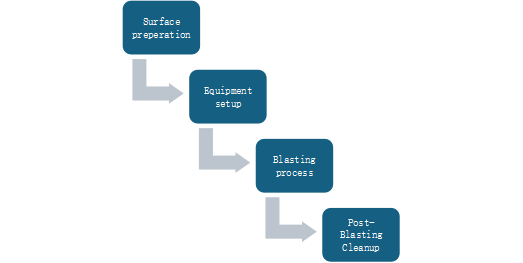
- Start by cleaning the surface to remove dust particles and various contaminants leading to process efficiency.
- Next, set up your equipment. This can be done in the blasting cabinet or even in an open space depending on the components’ size along with pressure adjustment.
- Now the actual blasting process starts by adjusting the blasting gun in an optimum angle and distance to attain a uniform surface treatment while checking it consistently until the desired finish.
- After completion, remove the extra contaminants or residue with the help of soft brush, vacuum or compressed air.
Characteristics
Below are the major characteristics that belong to sand blasting:
Aggressive Action
Its ability to act aggressively makes it suitable for surfaces that are exposed to rust, corrosion or paint which are categorized under tough contaminants.
Rougher Surface Finish
It leads to a rough surface finish with small grooves and pit making the substrate surface suitable enough for coatings and paint.
Limited Material Compatibility
It is limited to certain materials that are delicate and soft in nature including wood, aluminum along with specific plastics. Therefore, process parameters should be readjusted if treatment must be done.
Which CNC Machined Products Require Sandblasting and Bead Blasting Services?
Below is the list of products that require sand blasting and blead blasting services:
Products Requiring Sandblasting:
- Gears,
- shafts
- Pump housings,
- valves, and flanges.
- Engine blocks
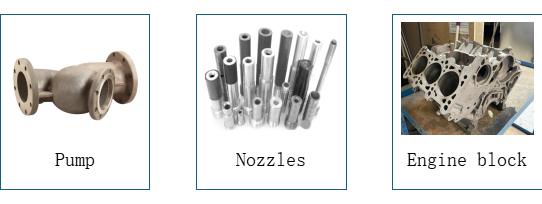
Figure 4: Sand blasted CNC products
Products Requiring Bead Blasting
- Turbine blades
- Aircraft panels
- Surgical instruments
- Implants
- Rings
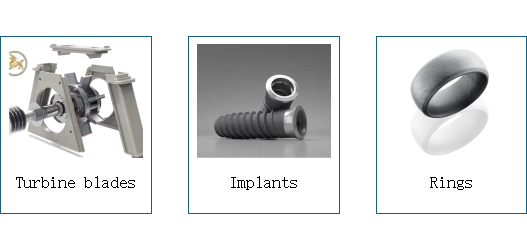
Figure 5: Bead blasted CNC products
Applications and Advantages: Bead Blasting vs. Sandblasting
Below is the brief explanation regarding applications and advantages of both methods:
Applications of Bead Blasting
a. Surface Cleaning
Effective surface cleaning is usually required by industries including aerospace, electronics etc. to maintain structural integrity.
b. Surface Preparation
Better surface preparation for adequate painting or coating purposes to increase the adhesion between the subsequent layers.
c. Surface Finishing
Good quality surface finish is achieved via bead blasting resulting in a smooth and aesthetical appearance. Major applications include jewelry, and other decorative items.
Advantages of Bead Blasting
a. Gentle on Delicate Surfaces
Suitable for delicate and soft materials as the technique is gentle with a controlled impact leading to clean surface finish without causing any deformation.
b. Produces a Uniform Finish
Another advantage of using bead blasting is the homogeneity in the distribution of beads which guarantee a uniform surface finish making it suitable for applications requiring high precision.
c. Environmentally Friendly
The process is environment friendly as it generates little dust and contaminant present in air leading to an eco-friendly environment.
Applications of Sandblasting
a. Heavy-Duty Cleaning
It is well convenient for heavy duty cleaning including construction, manufacturing, ship building and vice versa.
b. Surface Texturing
The process includes texturing the surface by introducing pitted surface to increase the adhesion effect for paints, coating and other adhesives.
c. Shape Alteration
This technique can also be used for altering the shape and size which is beneficial in manufacturing and fabrication of metals.
Advantages of Sandblasting
a. Effective for Tough Contaminants
Major advantage includes the removal of tough contaminants due to its aggressive action assisting in deep cleaning comparatively.
b. Creates a Rough Surface
The process creates a rough texture on the surface through abrasive action that provides mechanical grip and adequate adhesion between coating material and substrate surface.
c. Cost-Effective
It provides an affordable solution for cleaning along with preparation of surface making itself suitable for numerous projects.
Disadvantages and Limitations: Bead Blasting vs. Sandblasting
Following are the limitations of both techniques:
Disadvantages of Bead Blasting
- Slower Process
It is a slow process therefore a big disadvantage for the projects and applications demanding time efficiency.
- Limited Abrasive Power
It is not suitable for components that contain tough contaminants making it limited to delicate material.
- Bead Selection
Choosing the right type and shape of bead is crucial for effecting results in terms of cleaning and surface preparation.
Disadvantages of Sandblasting
- Damage to Delicate Surfaces
This technique is not suitable for soft and delicate material because it can cause deformation in the materials surface.
- Dust Generation
This process creates a lot of dust which is somehow harmful for the operator and compromises the environment.
- Environmental Concerns
As this process creates a lot of dust, the environment is not eco-friendly.
Selection Considerations
Consider the following steps while choosing the right technique for surface preparation:
Material
The material type in terms of sensitivity, thickness and mechanical aspect is critical when selecting appropriate technique.
Surface Finish
Depending on the type of finish you require, i.e., smooth or textured along with the functional requirements can lead to effective decision making.
Contaminant Removal
Evaluate and interpret the nature of contaminants by assessing their severity and type. Moreover, the depth of cleaning your specimen requires.
Environmental Impact
Assessment of environmental impact a certain technique could impose is crucial to understand especially the amount of dust created and hazardous particles it may contain.
Cost-Effectiveness
Depending on the sensitivity and nature of the project, choose an affordable technique which is both economical and effective functioning.
What is the Difference Between Bead Blasting and Sandblasting
Below is the summarized difference between bead and sand blasting:
Table 1: Difference between bead and sand blasting
|
Characteristic |
Bead Blasting |
Sand blasting |
|
Media Used |
Spherical beads |
Silica sand |
|
Abrasiveness |
Less |
More |
|
Surface Finish |
Smooth |
Rough |
|
Material Removal |
Minimal |
More |
|
Safety |
Safe |
More hazardous due to silica dust |
 Tel/WeChat:
Tel/WeChat:  Email:
Email: 
 Home
Home
 Where Are Metals on the Periodic Table? Types, Properties
Where Are Metals on the Periodic Table? Types, Properties 







